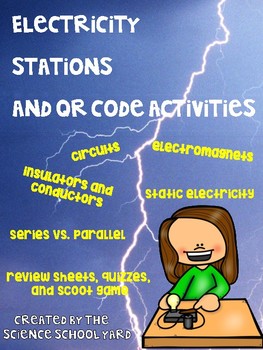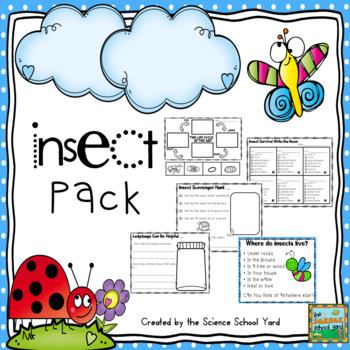Air is all around us. Air moves things, Air interacts with other objects, and Air is an invisible gas that takes up space. Here are a few quick air activities that you can add to your science lessons based on the following K-2nd grade NGSS concepts...
Starting Point:
Learning about air is the foundation for teaching structure and properties of matter as you learn that air is a gas and takes up space. I teach these mini lessons to my second graders to teach them to plan and conduct investigations to describe how different kinds of materials and objects have observable properties.
The Plan:
I first show them a clear plastic baggie filled with air. I let them know we are going to learn about something very special that can change weather and be very dangerous at times. I have it in the bag. What is in the bag can also move other things and interact with objects. I then show them the bag. Most believe nothing is in the bag, however there is always one that guesses air.
Giving them a plastic bag of their own filled with objects that are light and heavy, flat and 3-D is a great way to then teach properties and what makes them a solid or a gas. (I don't give them liquids at this point) I let them blow with a straw or with their own breath and see how air moves things. I love reading the story The Wind Blew. Perfect for adding in what is a prediction!
Book Connection: The Wind Blew by Pat Hutchins
STEM Connections: I love having the students make a maze to blow a cotton ball through. We also read The Three Pigs and build houses made of blocks to blow down.
Book Connections: The Three Pigs by James Marshall
Air Concept #2:
The framework core ideas that NGSS covers as you teach about air are: ESS2 D Weather and Climate, this is where we build up what is air and how and why can it be part of regulating weather and climate?
The concept air moves things can now be expanded to air interacts with other objects. Tie in weather reports, predicting the weather, and how moving air affects the weather. Observe clouds...create wind socks or pinwheels to observe wind movement.
STEM Connections: blow bubbles to watch the direction the wind is blowing...make your own bubble wand to test it out!
Book Connection: I like to use Feel The Wind by Arthur Dorros
Air Concept #3:
We also tie in a Kindergarten NGSS performance expectation: using and observing weather conditions can help us describe patterns over time. Keeping track of the weather as well as predicting the forecast is a great way to teach that predictions are only a guess. You can also tie in patterns and seasonal changes.
Book Connections: The Boy Who Harnessed the Wind by William Kamkwamba
STEM Connections: This all can tie into ESS3 where students learn about how Earth's surface processes and human activities affect each other. This can work with teaching natural resources such as how we use air as power. Creating wind turbines or boats powered by the wind is a perfect STEM connection!

Looking for a kindergarten through second grade pack that has everything you need? HERE is a great Wind Science and STEM Pack for you!
Looking for something for your older kiddos? Check out this STEM Quick Pick Energy Pack!

Time to air on the side of fun and engaging Science and STEM lessons that tie into NGSS! Whether you use FOSS Air and Weather lessons, NGSS, or TIEKS or anything in between it is always great to find new ideas to add to what you are already doing!
In this post, for your convenience, you may find Amazon Affiliate links to resources. This means that with your purchase of items Amazon will pass on small percentages to me. This will not create extra costs for you at all! It will help me keep this blog running!

0
Starting Point:
Learning about air is the foundation for teaching structure and properties of matter as you learn that air is a gas and takes up space. I teach these mini lessons to my second graders to teach them to plan and conduct investigations to describe how different kinds of materials and objects have observable properties.
The Plan:
I first show them a clear plastic baggie filled with air. I let them know we are going to learn about something very special that can change weather and be very dangerous at times. I have it in the bag. What is in the bag can also move other things and interact with objects. I then show them the bag. Most believe nothing is in the bag, however there is always one that guesses air.
Giving them a plastic bag of their own filled with objects that are light and heavy, flat and 3-D is a great way to then teach properties and what makes them a solid or a gas. (I don't give them liquids at this point) I let them blow with a straw or with their own breath and see how air moves things. I love reading the story The Wind Blew. Perfect for adding in what is a prediction!
Book Connection: The Wind Blew by Pat Hutchins
STEM Connections: I love having the students make a maze to blow a cotton ball through. We also read The Three Pigs and build houses made of blocks to blow down.
Book Connections: The Three Pigs by James Marshall
Air Concept #2:
The framework core ideas that NGSS covers as you teach about air are: ESS2 D Weather and Climate, this is where we build up what is air and how and why can it be part of regulating weather and climate?
The concept air moves things can now be expanded to air interacts with other objects. Tie in weather reports, predicting the weather, and how moving air affects the weather. Observe clouds...create wind socks or pinwheels to observe wind movement.
STEM Connections: blow bubbles to watch the direction the wind is blowing...make your own bubble wand to test it out!
Book Connection: I like to use Feel The Wind by Arthur Dorros
Air Concept #3:
We also tie in a Kindergarten NGSS performance expectation: using and observing weather conditions can help us describe patterns over time. Keeping track of the weather as well as predicting the forecast is a great way to teach that predictions are only a guess. You can also tie in patterns and seasonal changes.
Book Connections: The Boy Who Harnessed the Wind by William Kamkwamba
STEM Connections: This all can tie into ESS3 where students learn about how Earth's surface processes and human activities affect each other. This can work with teaching natural resources such as how we use air as power. Creating wind turbines or boats powered by the wind is a perfect STEM connection!

Looking for a kindergarten through second grade pack that has everything you need? HERE is a great Wind Science and STEM Pack for you!
Looking for something for your older kiddos? Check out this STEM Quick Pick Energy Pack!

Time to air on the side of fun and engaging Science and STEM lessons that tie into NGSS! Whether you use FOSS Air and Weather lessons, NGSS, or TIEKS or anything in between it is always great to find new ideas to add to what you are already doing!
In this post, for your convenience, you may find Amazon Affiliate links to resources. This means that with your purchase of items Amazon will pass on small percentages to me. This will not create extra costs for you at all! It will help me keep this blog running!





















































